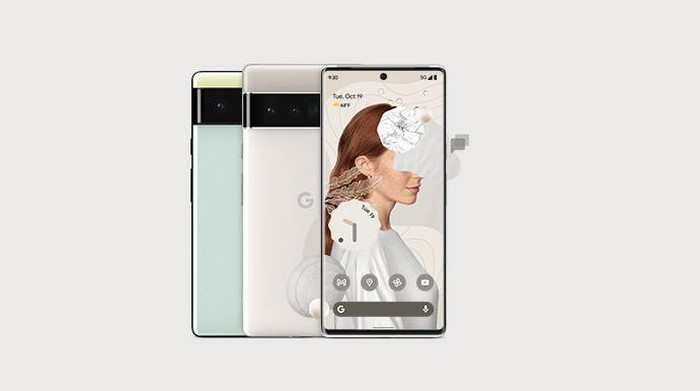
Overview:
Unveiled in 2021, the Google Pixel 6 marked a significant shift in Google’s smartphone strategy. With the Pixel 6, Google introduced its custom-designed Tensor SoC, signaling a move towards greater hardware and software integration. The device aimed to compete directly with flagship offerings from other major manufacturers.
Features:
- Operating System: Launched with Android 12, benefiting from direct and swift updates from Google.
- Display: 6.4-inch AMOLED capacitive touchscreen with a resolution of 1080 x 2340 pixels and a 120Hz refresh rate.
- Processor: Google Tensor SoC (System on Chip).
- Memory: Options of 8 GB RAM with 128/256 GB internal storage (non-expandable).
- Camera: Dual rear camera setup with a 50 MP primary wide sensor and a 12 MP ultrawide lens. An 8 MP front camera.
- Battery: 4600 mAh non-removable battery with fast charging, wireless charging, and reverse wireless charging capabilities.
- Connectivity: Wi-Fi 802.11 a/b/g/n/ac/6, Bluetooth 5.2, NFC, and 5G connectivity.
- Other Features: In-display fingerprint sensor, stereo speakers, IP68 dust/water resistance, and deep Google Assistant integration.
Pros:
- Google Tensor SoC: The custom-designed chip allowed for better optimization between hardware and software, leading to performance improvements and unique features.
- Camera Innovations: The Pixel 6 continued the series’ legacy of camera excellence, with features like Magic Eraser and improved computational photography.
- Design Overhaul: The Pixel 6 introduced a new design language with a distinctive camera bar, giving it a fresh and modern look.
- 120Hz Display: The high refresh rate provided a smooth and responsive user experience.
- Software Features: With Android 12, the Pixel 6 introduced features like Material You, offering a more personalized and adaptive user interface.
Cons:
- No Telephoto Lens: The standard Pixel 6 lacked a telephoto lens, which was reserved for the Pixel 6 Pro.
- Battery Life: While decent, some users felt the battery life could be better, especially given the high-refresh-rate screen and 5G connectivity.
- No Expandable Storage: The lack of a microSD slot might be limiting for users who need more storage.
Comparisons to Other Technologies:
In 2021, the flagship smartphone market was highly competitive. The Google Pixel 6 faced competition from:
- iPhone 13: Apple’s offering with its A15 Bionic chip, improved cameras, and iOS ecosystem.
- Samsung Galaxy S21: Samsung’s flagship with a versatile camera setup, dynamic AMOLED display, and a plethora of features.
- OnePlus 9: Featuring high-end specs, fast charging, and a partnership with Hasselblad for camera improvements.
Launch Date:
The Google Pixel 6 was announced in October 2021.
Common Issues/Problems:
- Fingerprint Sensor: Some users reported that the in-display fingerprint sensor was slower compared to other devices.
- Software Bugs: As with most new launches, there were occasional software bugs, but Google was generally quick to address them with updates.
- Availability: High demand led to stock shortages in some regions, making it challenging for consumers to purchase the device immediately after launch.
Conclusion:
The Google Pixel 6 was a pivotal device for Google, showcasing its ambition to be a major player in the flagship smartphone market. With the introduction of the Tensor SoC and a renewed focus on design and camera capabilities, the Pixel 6 was well-received by critics and consumers alike. While it had its share of criticisms, the device represented Google’s vision for the future of Android smartphones, blending unique hardware and software innovations.
One thought to “Google Pixel 6”